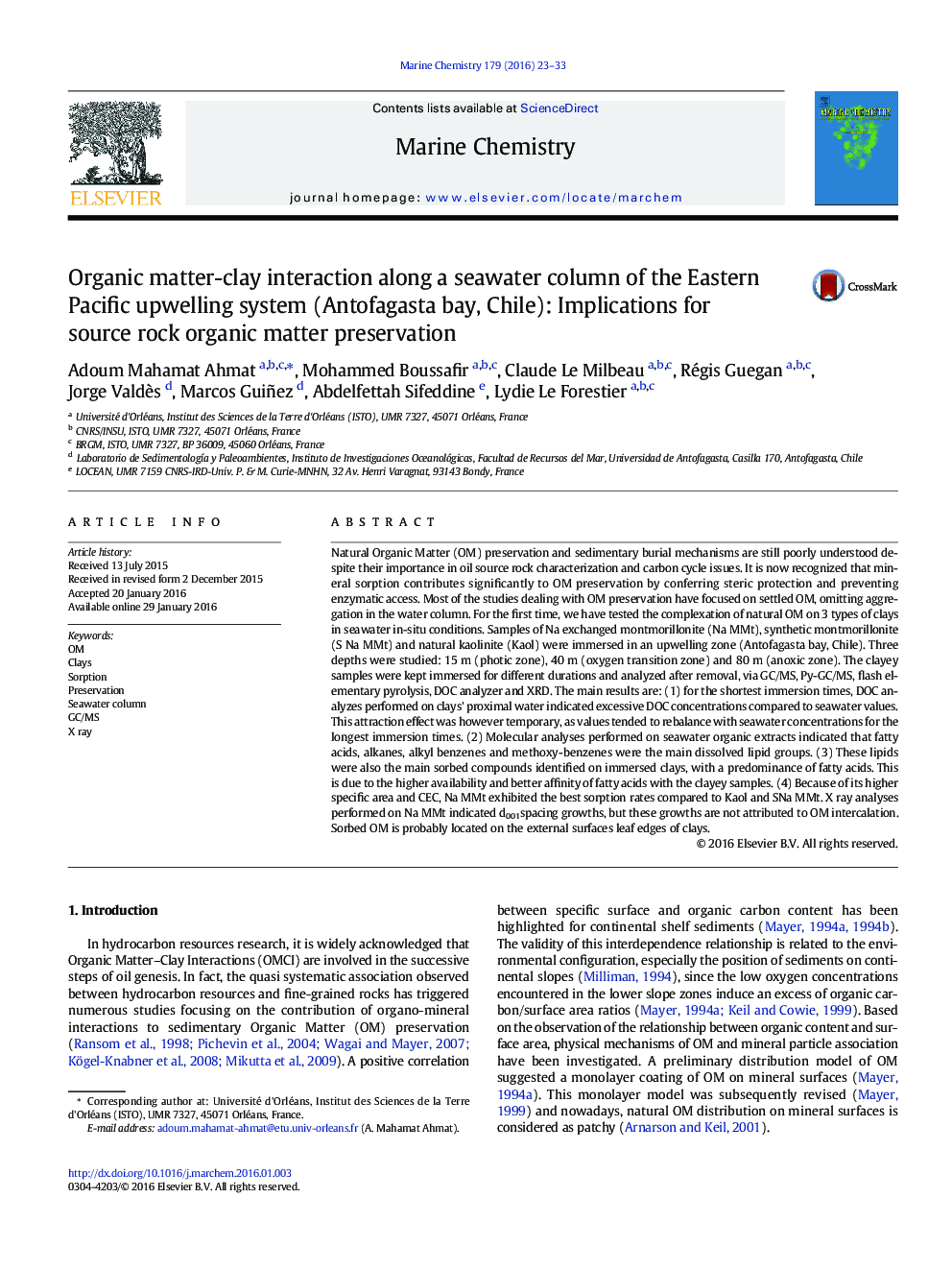| Article ID | Journal | Published Year | Pages | File Type |
|---|---|---|---|---|
| 1261150 | Marine Chemistry | 2016 | 11 Pages |
•Organo-clay interactions have been performed in a productive seawater column (Antofagasta Bay, Chile).•Excess of DOC concentrations have been noted in the clays traps compared to the seawater values.•Among the experimented clays, Na exchanged montmorillonite exhibited the best sorption rates.•The anoxic zone of the water column was the most propitious zone for the sorption process.
Natural Organic Matter (OM) preservation and sedimentary burial mechanisms are still poorly understood despite their importance in oil source rock characterization and carbon cycle issues. It is now recognized that mineral sorption contributes significantly to OM preservation by conferring steric protection and preventing enzymatic access. Most of the studies dealing with OM preservation have focused on settled OM, omitting aggregation in the water column. For the first time, we have tested the complexation of natural OM on 3 types of clays in seawater in-situ conditions. Samples of Na exchanged montmorillonite (Na MMt), synthetic montmorillonite (S Na MMt) and natural kaolinite (Kaol) were immersed in an upwelling zone (Antofagasta bay, Chile). Three depths were studied: 15 m (photic zone), 40 m (oxygen transition zone) and 80 m (anoxic zone). The clayey samples were kept immersed for different durations and analyzed after removal, via GC/MS, Py-GC/MS, flash elementary pyrolysis, DOC analyzer and XRD. The main results are: (1) for the shortest immersion times, DOC analyzes performed on clays' proximal water indicated excessive DOC concentrations compared to seawater values. This attraction effect was however temporary, as values tended to rebalance with seawater concentrations for the longest immersion times. (2) Molecular analyses performed on seawater organic extracts indicated that fatty acids, alkanes, alkyl benzenes and methoxy-benzenes were the main dissolved lipid groups. (3) These lipids were also the main sorbed compounds identified on immersed clays, with a predominance of fatty acids. This is due to the higher availability and better affinity of fatty acids with the clayey samples. (4) Because of its higher specific area and CEC, Na MMt exhibited the best sorption rates compared to Kaol and SNa MMt. X ray analyses performed on Na MMt indicated d001spacing growths, but these growths are not attributed to OM intercalation. Sorbed OM is probably located on the external surfaces leaf edges of clays.
